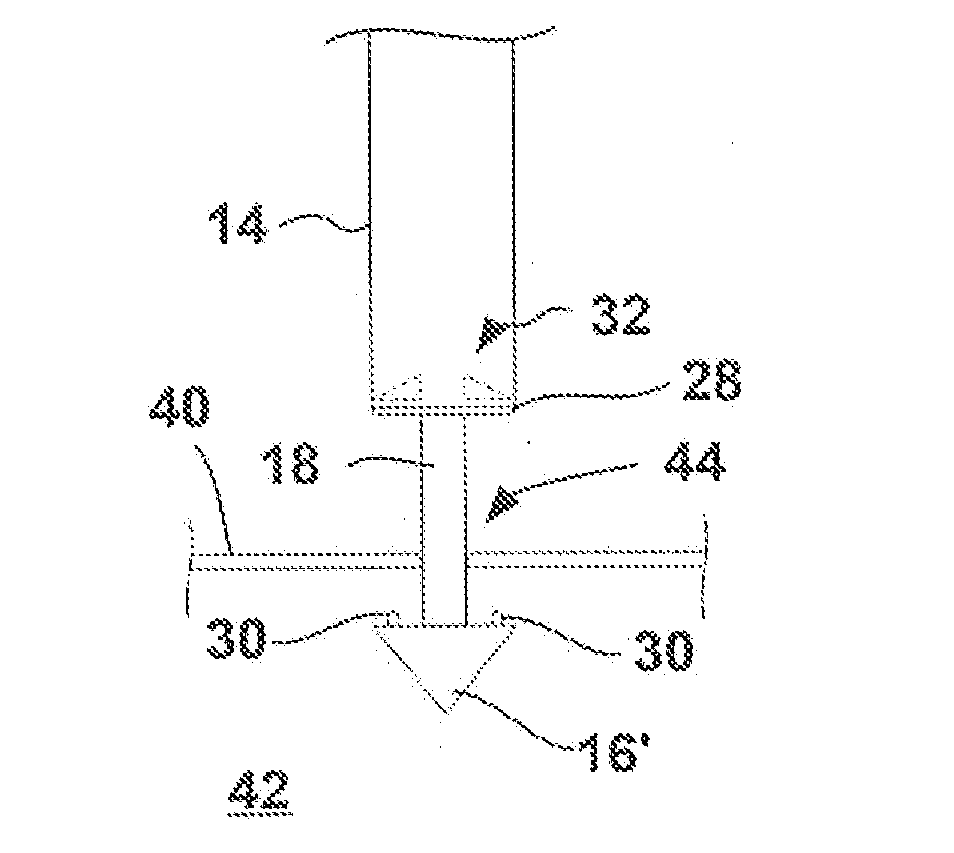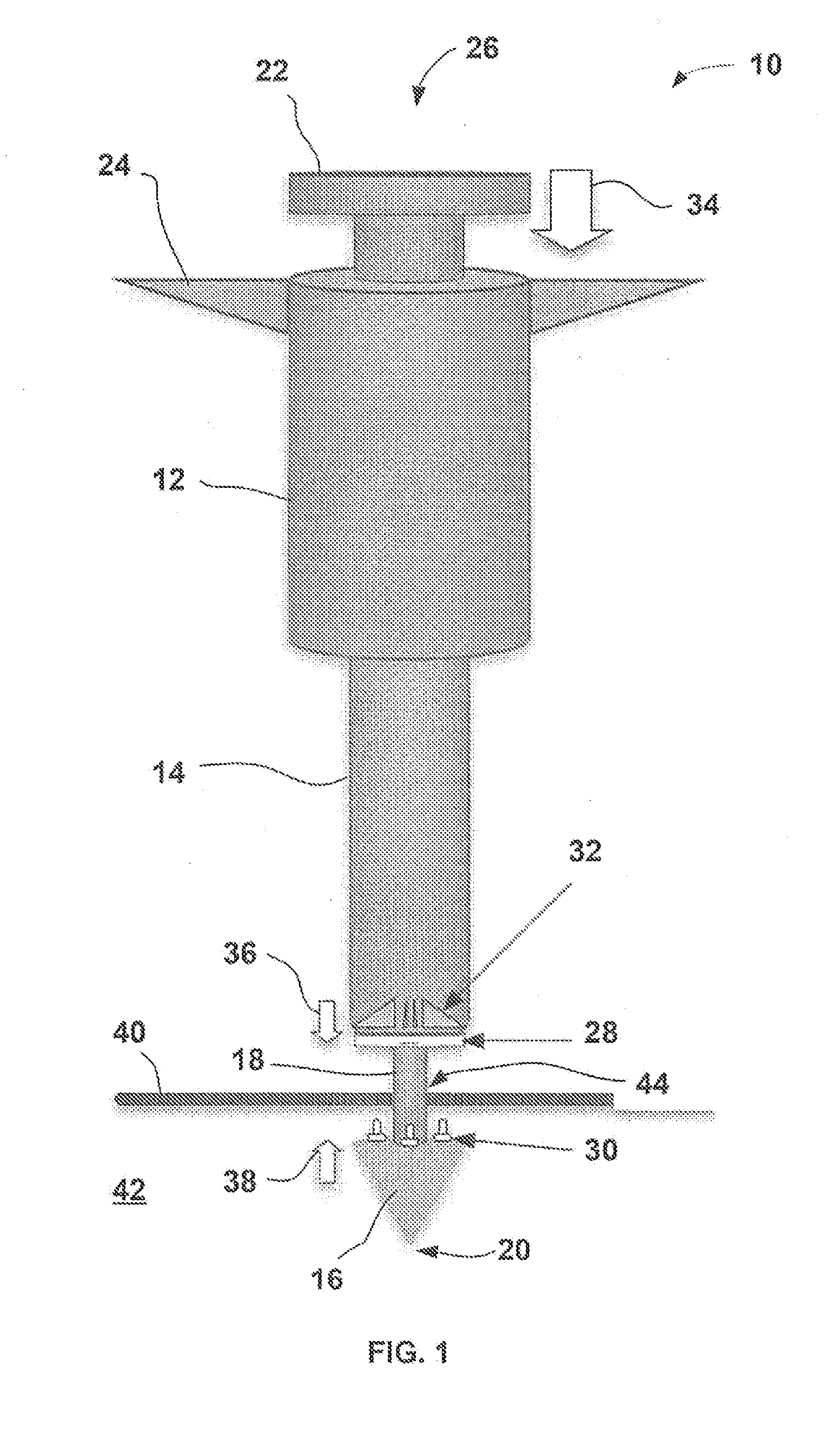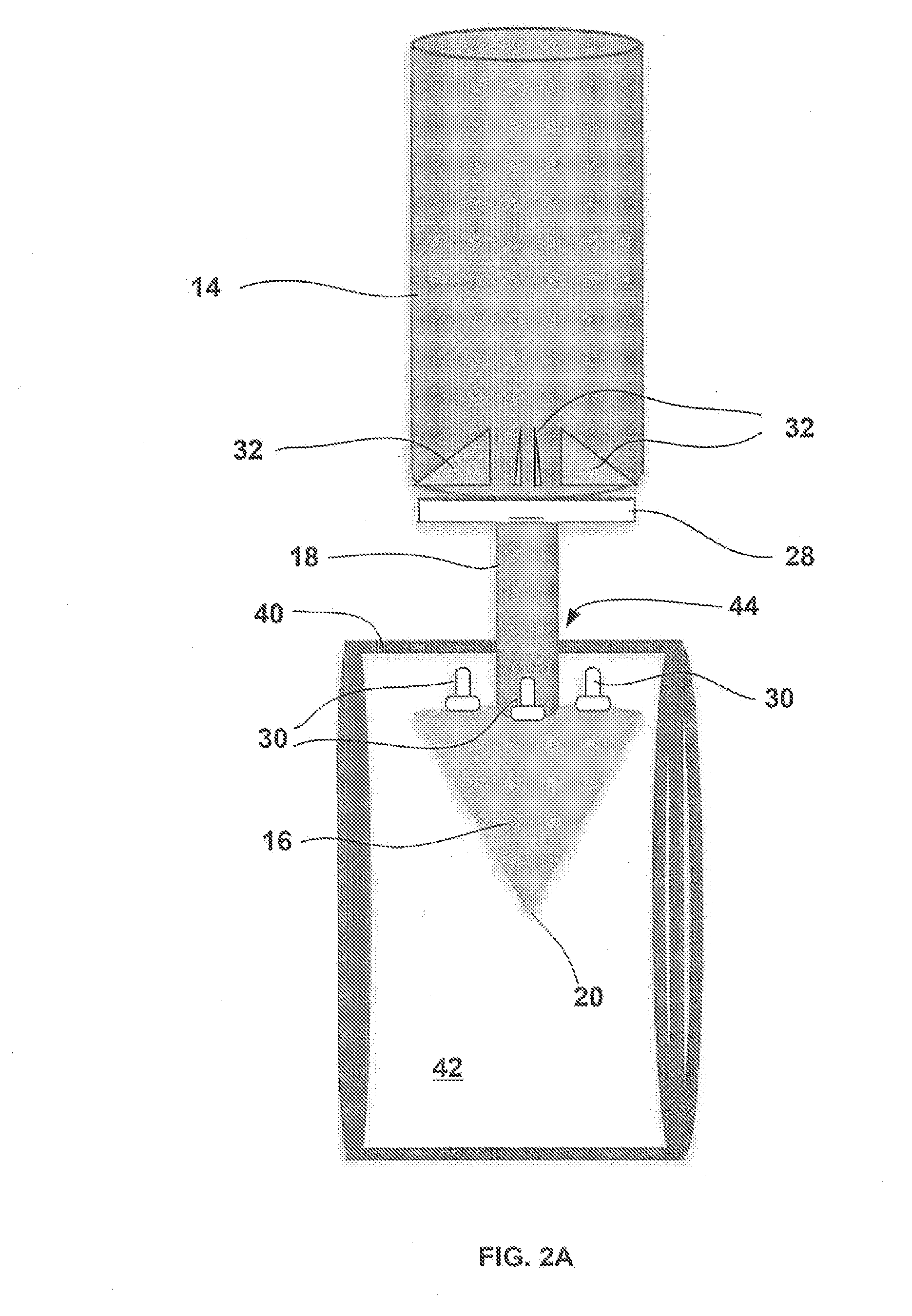Vascular access devices and methods of use
a technology of vascular access and puncture site, which is applied in the field of devices and methods for accessing and/or controlling vascular access puncture sites, can solve the problems of vascular access site complications, patient morbidity for interventional techniques, and the closure of larger sized holes left by larger diameter catheters, so as to maintain the size of the vessel lumen and the effect of rapid sheath removal
- Summary
- Abstract
- Description
- Claims
- Application Information
AI Technical Summary
Benefits of technology
Problems solved by technology
Method used
Image
Examples
Embodiment Construction
[0026]Vascular access control devices and methods of use may allow for a single access pole which is adhered, connected, or otherwise attached to a vessel wall and allows for, but is not limited to, control of small to large sized vascular defects (e.g., large sized vascular defects or openings may range anywhere from 12 F-24 F), use with anticoagulation agents, rapid sheath removal, early ambulation of the patient, access through the same port, maintaining a size of the vessel lumen after repair, etc.
[0027]Moreover, such an access port may allow a user to access and / or re-access the same artery and / or vein of patients utilizing various diameter catheters and instruments. For instance, patients who may require long-term indwelling catheters or those who require repeated intravascular access, e.g., hemodialysis patients, may benefit. Thus, after a procedure utilizing the access port, the tissue region surrounding the access port may be closed upon the port and left implanted in the p...
PUM
 Login to View More
Login to View More Abstract
Description
Claims
Application Information
 Login to View More
Login to View More - R&D
- Intellectual Property
- Life Sciences
- Materials
- Tech Scout
- Unparalleled Data Quality
- Higher Quality Content
- 60% Fewer Hallucinations
Browse by: Latest US Patents, China's latest patents, Technical Efficacy Thesaurus, Application Domain, Technology Topic, Popular Technical Reports.
© 2025 PatSnap. All rights reserved.Legal|Privacy policy|Modern Slavery Act Transparency Statement|Sitemap|About US| Contact US: help@patsnap.com



